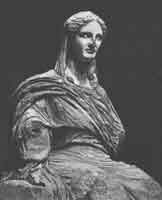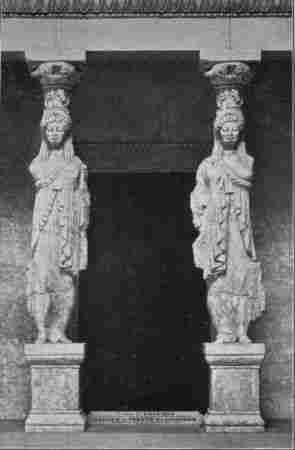.
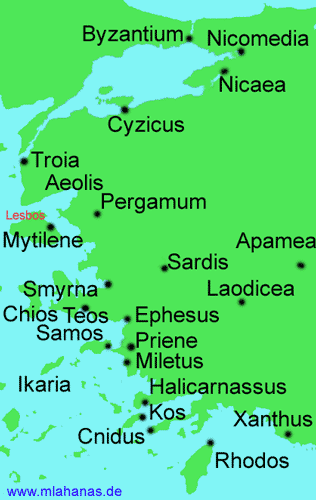
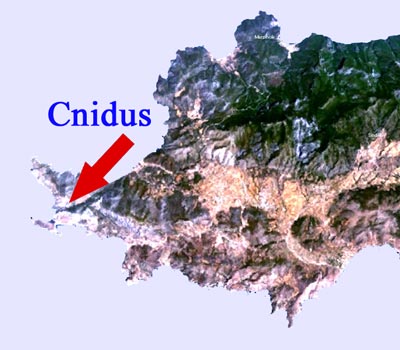
Knidos or Cnidus (modern-day Tekir in Turkey) is an ancient Greek city in Asia Minor, once part of the country of Caria. It is situated at the extremity of the long peninsula that forms the southern side of the Sinus Ceramicus or Gulf of Kos (Cos).
It was built partly on the mainland and partly on the Island of Triopion or Cape Krio, which anciently communicated with the continent by a causeway and bridge, and now by a narrow sandy isthmus. By means of the causeway the channel between island and mainland was formed into two harbours, of which the larger, or southern, was further enclosed by two strongly-built moles that are still in good part entire.
The extreme length of the city was little less than a mile, and the whole intramural area is still thickly strewn. with architectural remains. The walls, both insular and continental, can be traced throughout their whole circuit; and in many places, especially round the acropolis, at the northeast corner of the city, they are remarkably perfect. Our knowledge of the site is largely due to the mission of the Dilettanti Society in 1812, and the excavations executed by C T Newton in 1857-1858.
The agora, the theatre, an odeum, a temple of Dionysus, a temple of the Muses, a temple of Aphrodite and a great number of minor buildings have been identified, and the general plan of the city has been very clearly made out. The most famous statue by the elder Praxiteles, the Aphrodite, was made for Cnidus. It has perished, but late copies exist, of which the most faithful is in the Vatican gallery.
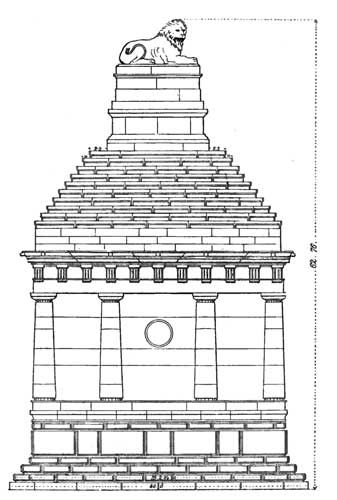
Lion Tomb Cnidus
In a temple-enclosure Newton discovered a fine seated statue of Demeter, which now adorns the British Museum; and about 3 miles south-east of the city he came upon the ruins of a splendid tomb, and a colossal figure of a lion carved out of one block of Pentelic marble, 10 feet in length and 6 in height, which has been supposed to commemorate the great naval victory of Conon over the Lacedaemonians in 394 BC.
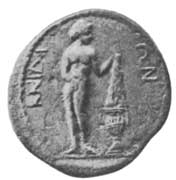
Cnidus Coin with the Aphrodite of Cnidus

Aphrodite of Cnidus, Praxiteles and the Hetaera Phryne
Knidos was a city of high antiquity and probably of Lacedaemonian colonization. Along with Halicarnassus and Kos, and the Rhodian cities of Lindos, Kamiros and Ialyssos it formed the Dorian Hexapolis, which held its confederate assemblies on the Triopian headland, and there celebrated games in honour of Apollo, Poseidon and the nymphs.
The city was at first governed by an oligarchic senate, composed of sixty members, and presided over by a magistrate; but, though it is proved by inscriptions that the old names continued to a very late period, the constitution underwent a popular transformation. The situation of the city was favourable for commerce, and the Knidians acquired considerable wealth, and were able to colonize the island of Lipara, and founded the city of Corcyra Nigra in the Adriatic. They ultimately submitted to Cyrus, and from the battle of Eurymedon to the latter part of the Peloponnesian War they were subject to Athens.
In 394 BC Conon fought off the port the battle which destroyed Spartan hegemony. The Romans easily obtained their allegiance, and rewarded them for help given against Antiochus by leaving them the freedom of their city. During the Byzantine period there must still have been a considerable population: for the ruins contain a large number of buildings belonging to the Byzantine style, and Christian sepulchres are common in the neighbourhood.
Cnidus , Panoramic image (Source)
Persons from Cnidus
Chrysippus of Cnidus, Physician
Ctesias, the writer on Persian history,
Sostratus of Cnidus the son of Dexiphanes, the builder of the celebrated Pharos at Alexandria,
This article incorporates text from the public domain 1911 Encyclopædia Britannica.
| Ancient Greece
Science, Technology , Medicine , Warfare, , Biographies , Life , Cities/Places/Maps , Arts , Literature , Philosophy ,Olympics, Mythology , History , Images Medieval Greece / Byzantine Empire Science, Technology, Arts, , Warfare , Literature, Biographies, Icons, History Modern Greece Cities, Islands, Regions, Fauna/Flora ,Biographies , History , Warfare, Science/Technology, Literature, Music , Arts , Film/Actors , Sport , Fashion --- |
Retrieved from "http://en.wikipedia.org/"
All text is available under the terms of the GNU Free Documentation License


